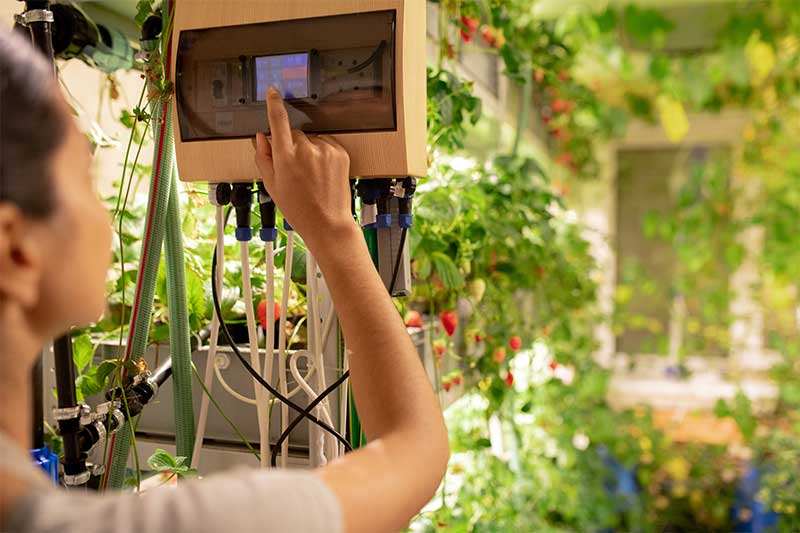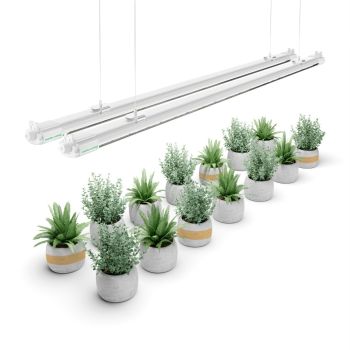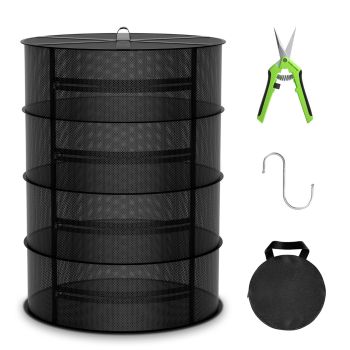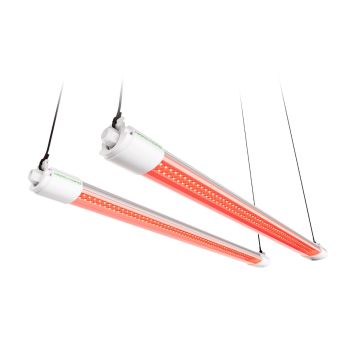
Welcome to the captivating world of purple weed cultivation! In this comprehensive guide, we embark on an enchanting journey to unravel the secrets behind growing these visually stunning and potent purple strains. Whether you're a seasoned grower or a curious newcomer, this blog will guide you through the fascinating process of cultivating weed that not only delivers exceptional quality but also boasts an alluring array of purple hues.
Join us as we delve into the art and science of nurturing these rare and sought-after varieties, transforming your garden into a canvas of vibrant purples and rich greens. Get ready to discover the magic that lies in growing purple weed strains – a journey that promises to be as rewarding as it is colorful.
Understanding the Basics
The Importance of Genetics
Embarking on the journey of growing purple strains, one quickly learns that the secret to vibrant hues lies deep within the plant's DNA. The genetic makeup of your chosen strain is the cornerstone of achieving those coveted purple tones. Strains such as Granddaddy Purple, Purple Kush, and Purple Haze don't just carry a legacy in their names; they are imbued with a genetic predisposition for displaying a spectacular spectrum of purple.
In this kaleidoscope of genetics, each strain offers its unique shade and intensity of purple, shaped by its lineage and breeding history. Granddaddy Purple, known for its deep, almost royal purple and its sedative effects, contrasts with Purple Haze, which often exhibits lighter lavender hues accompanied by an uplifting high. Purple Kush, on the other hand, brings a rich, earthy shade of purple coupled with a deeply relaxing experience.
Selecting the right strain isn’t just about choosing a color; it’s about understanding the symphony of genetics that will play out in your grow space. This selection is your first, and perhaps most impactful, decision as a cultivator of purple weed. It's a blend of personal preference, cultivation conditions, and the desired characteristics in your final product.
Remember, the journey to magnificent purple weed starts with a single choice – the seed. This choice sets the stage for everything that follows, from the vibrancy of the color to the nuances of the aroma and potency. Choose wisely, and you'll be rewarded with a garden that's not only a visual feast but also a testament to the rich genetic tapestry of weed.
Temperature Control

Temperature is a pivotal environmental factor in the cultivation of purple weed, specifically influencing the development of anthocyanins, the compounds responsible for the purple pigmentation in plants. When exposed to cooler temperatures, weed plants undergo a physiological change. The production of chlorophyll, which gives plants their green color, slows down. In contrast, anthocyanins, which are more stable at lower temperatures, become more prominent, leading to the development of purple hues in the plant.
During the flowering stage, maintaining a nocturnal temperature that is 10-15 degrees Celsius lower than the daytime temperature is optimal. This temperature differential is critical in stressing the plant in a controlled manner, which stimulates the production of anthocyanins. It's a delicate balance; too much stress can harm the plant, while too little won’t induce the desired color change.
It's essential to consistently monitor and regulate the temperature. Sudden temperature fluctuations can stress the plant excessively, potentially hindering its growth and health.
pH Levels and Nutrient Management
Manipulating the pH levels and managing nutrients are equally important in enhancing the purple coloration of weed plants.
pH Adjustment for Color Enhancement
- Optimal pH Range: weed typically thrives in slightly acidic to neutral pH conditions, around 6.0 to 7.0. However, when aiming for color enhancement, slight adjustments within this range can influence anthocyanin production.
- Monitoring and Adjustment: Regular testing and careful adjustment of the soil or hydroponic solution’s pH can subtly influence the plant's color. This process requires precise control; overly acidic or alkaline conditions can be detrimental to the plant's overall health.
Balanced Nutrient Management
- Reducing Nitrogen: During the flowering stage, reducing nitrogen levels can promote the expression of purple hues. High nitrogen levels can suppress anthocyanin production, keeping the plant green.
- Increasing Phosphorus and Potassium: A balanced increase in phosphorus and potassium, while controlling nitrogen levels, can not only support the overall health and flowering of the plant but also aid in color development.
- Micronutrient Attention: Micronutrients like magnesium and sulfur, although required in smaller quantities, play a significant role in the plant's health and coloration. Deficiencies or excesses can impact the desired color outcomes.
The interplay between environmental factors such as temperature, pH levels, and nutrient management is a complex yet fascinating aspect of cultivating purple weed. Understanding and manipulating these conditions can lead to the successful development of vivid purple hues in weed, making each cultivation cycle a rewarding experience for growers seeking both aesthetic appeal and quality in their plants.
Detailed Cultivation Steps for Purple weed

Germination and Seedling Care: Laying the Foundation
The journey of cultivating purple weed starts with the germination of high-quality seeds. This initial phase is crucial as it sets the foundation for the plant's health, vigor, and eventual color development.
1. Seed Selection: Choose seeds from reputable sources, ideally strains known for their purple hues.
2. Germination Environment: Use a controlled environment, such as a seed starting tray with a heat mat in Mars Hydro seedling starter kits, to maintain consistent temperature and moisture levels.
3. Early Nutrition: Once seedlings emerge, ensure they receive gentle nutrition. Use a mild, balanced nutrient solution to avoid overwhelming the young plants.
4. Lighting: Provide adequate light with a spectrum suitable for young plants. Mars Hydro VG80 is an ideal lighting choice, offering a spectrum specifically tailored for seedlings. This includes a balanced mix of blue and red light, promoting strong stems and leaves with blue light, and essential root development with red light. The VG80's gentle intensity is perfect for delicate seedlings, minimizing the risk of light burn and stress. Additionally, its energy-efficient design ensures the right amount of light without excessive electricity use, maintaining a stable temperature conducive to seedling growth. The VG80 also ensures even light distribution, preventing uneven growth and ensuring all seedlings receive equal light for uniform development.
Vegetative and Flowering Stages: Growing and Triggering Color
The vegetative stage is a period of significant growth, setting the stage for the flowering phase where techniques can be applied to develop purple hues in the plants.
1. Vegetative Growth: This phase is crucial for building a strong, healthy plant with a well-developed root system, which is essential for vibrant color expression later. Optimal lighting is key, with 18-24 hours of light per day recommended to promote robust growth. Proper feeding is also vital; a balanced nutrient regimen that caters to the plant's growing needs should be followed. Additionally, maintaining the correct humidity and temperature levels is essential for healthy vegetative growth, as these factors contribute to the plant's overall strength and vitality.
2. Transition to Flowering: As the plant moves from the vegetative to the flowering stage, adjusting the light cycle is critical. Gradually shifting to 12 hours of light and 12 hours of darkness triggers the plant to enter the flowering phase. This light cycle shift is a signal to the plant to start developing flowers and, subsequently, the desired purple pigmentation.
3. Temperature Management for Color Development: In the flowering stage, managing temperature becomes crucial for the development of purple hues. Lowering the nighttime temperatures gradually during this stage can stimulate the production of anthocyanins, the pigments responsible for purple coloring. This decrease in temperature should be done cautiously to avoid stressing the plant, which could negatively impact its health and flowering. The aim is to create a slight, controlled stress condition that encourages pigment development without harming the plant's overall health and flowering capability.
4. Light Spectrum and Duration: To enhance the development of purple colors, you can consider specific light spectrum adjustments in addition to temperature control. During the vegetative and early flowering stages, it's crucial to provide a balanced spectrum of red and blue light. As the plants progress into the flowering stage, you can strategically shift the light spectrum by increasing the proportion of blue light while gradually reducing the amount of red light. This transition emulates the changing light conditions of autumn, which can further encourage the development of purple pigmentation. Moreover, some studies suggest that exposing weed plants to ultraviolet (UV) light during the vegetative and early flowering stages can stimulate the production of anthocyanins and enhance the purple coloring. To implement this strategy effectively, products like the UR45 and VG40R/VG80R are excellent solutions to provide the necessary light spectrum adjustments for optimal color development.
Harvesting and Curing: Maximizing Color and Potency

The harvest and curing processes are pivotal in achieving the deepest purple hues and the highest potency in your plants. Close observation of trichome maturity and overall plant appearance will guide the timing of your harvest, while a meticulous curing process will further enhance the intensity of the purple hues and the potency of your buds.
1. Timing the Harvest with Trichome Maturity:
- Trichome Inspection: The maturity of trichomes is a key indicator of readiness for harvest. Use a magnifying glass or a jeweler's loupe to closely examine the trichomes on the buds. Initially transparent, trichomes turn a milky white as they mature, eventually adopting an amber hue. The transition from milky to amber signifies peak potency and is often the optimal time for harvesting to maximize both the desired color and the psychoactive properties of the plant.
- Plant Appearance: In addition to trichome inspection, observe the overall maturity of the plant. This includes noting the browning of pistils and the fullness and density of the buds. A mature plant typically shows a higher percentage of brown or orange pistils, and the buds will have a rich, full appearance, indicative of their readiness for harvest.
2. Curing for Color and Potency:
- Proper Drying: After harvesting, the drying process is crucial. Drying too quickly can hinder the development of color and potency. Aim for a slow, controlled drying process in a dark, well-ventilated area with stable humidity and temperature.
- Curing Process: Once dried, the buds should be cured. Curing involves storing the buds in airtight containers, typically glass jars, and opening them periodically to allow for air exchange. This process not only enhances the potency and the flavor profile of the buds but also can intensify the purple coloration. The ideal curing environment is dark, with controlled humidity, to preserve the terpenes and cannabinoids, which contribute to the plant's potency and sensory attributes.
- Monitoring and Adjusting: Regularly check the buds during the curing process for any signs of mold or deterioration. Adjust the humidity and temperature as necessary to maintain the quality of the buds and to enhance their color and potency.
The Curing Process: Enhancing Color and Flavor

The curing process is a critical step in enhancing the overall quality of your buds, affecting their color, flavor, and potency. It requires careful attention to drying, storage, humidity control, and time, with ongoing monitoring and adjustments to achieve the best results.
1. Drying:
- Method: Start by hanging the buds upside down in an environment with controlled temperature and humidity. This position helps preserve the shape and integrity of the buds.
- Environment: Ensure good air circulation and a dark setting to protect the delicate terpenes responsible for flavor and aroma. A slow and even drying process is crucial; rushing this step can degrade quality.
- Timing: The drying phase typically lasts about 7-10 days, depending on environmental conditions. The goal is to remove moisture gradually without losing essential oils and terpenes.
2. Jar Curing:
- Storage: Transfer the adequately dried buds into airtight jars, usually made of glass to prevent any contamination and preserve quality.
- Burping: Regularly 'burp' the jars – open them to let out moisture and allow fresh air in. This process is vital for preventing mold growth and for the gradual maturation of the buds.
- Consistency: Ensure the buds are not too tightly packed, which could hinder air circulation within the jar.
3. Monitoring Humidity:
- Tools: Use hygrometers inside the jars to keep a consistent check on humidity levels.
- Ideal Range: Maintain humidity levels at 60-65% to create the perfect balance for preserving the buds while allowing them to mature.
4. Duration and Patience:
- Time Frame: The curing process generally takes several weeks to a few months. Patience is key; longer curing times often result in better-developed flavors and colors.
- Quality Improvement: Over time, the curing process will enhance the smoothness, flavor, and aroma of the buds. Additionally, prolonged curing can lead to a more pronounced color, particularly in strains with the potential for vibrant hues.
5. Ongoing Assessment:
- Check Regularly: Regularly inspect the buds for any signs of mold or degradation.
- Adjustments: Make any necessary adjustments to the environment, such as reducing humidity if there are signs of moisture accumulation.
Conclusion
Cultivating purple weed is a rewarding endeavor that combines art and science. By carefully managing the germination, vegetative, flowering, harvesting, and curing processes, and by paying close attention to environmental factors such as light and nutrients, you can successfully grow vibrant and potent purple weed. Remember, Mars Hydro is your greatest ally in this journey.









